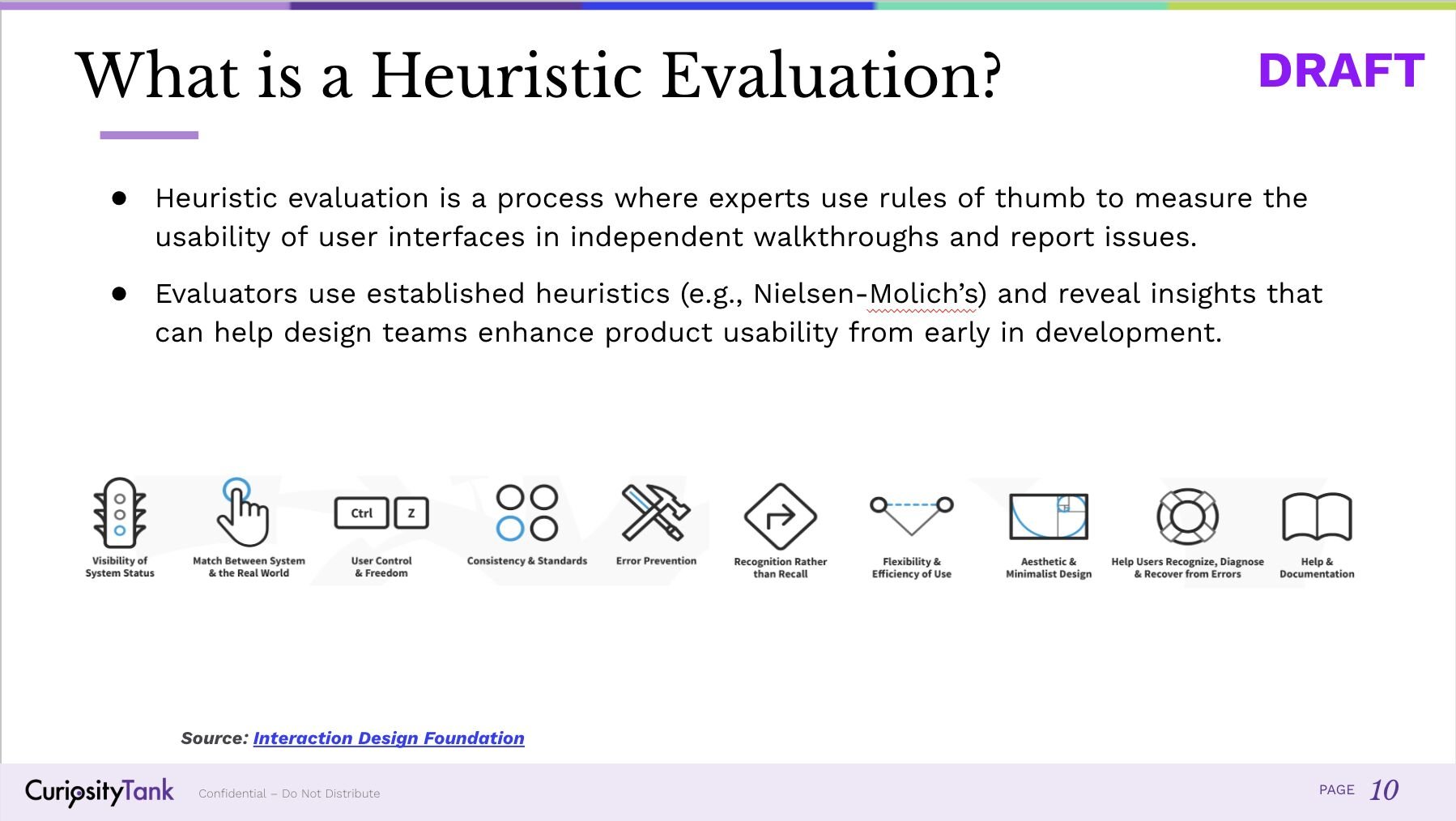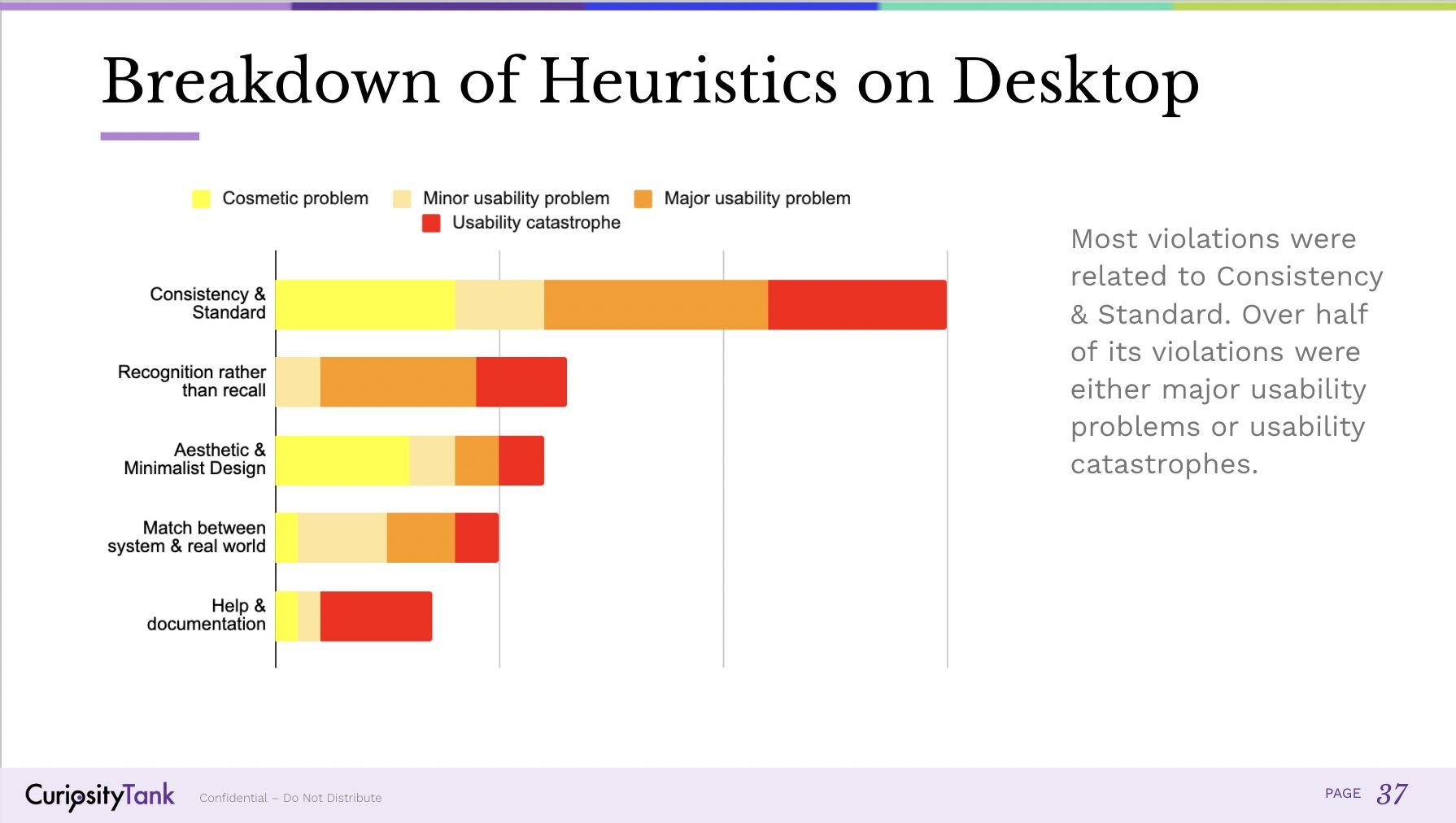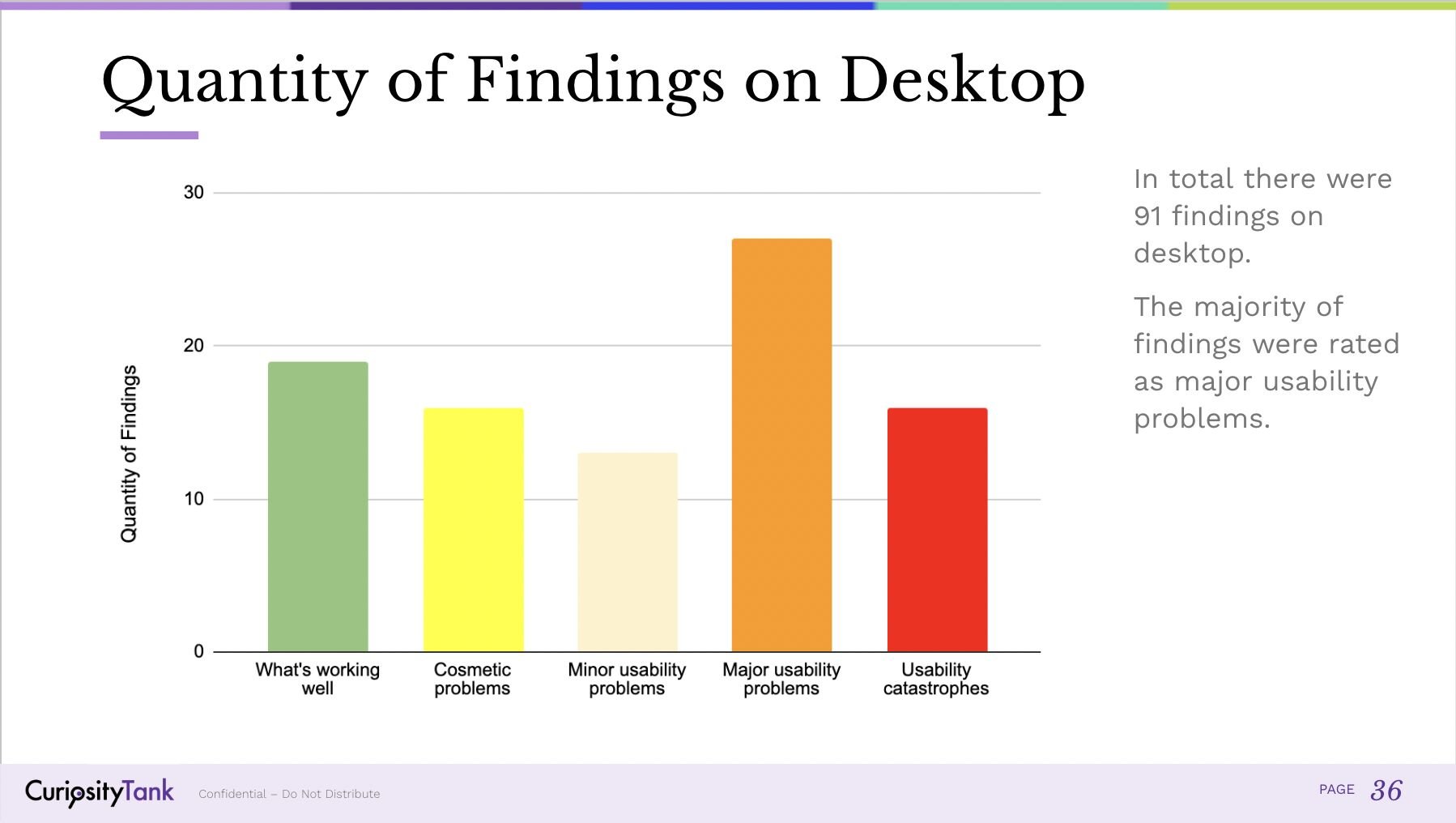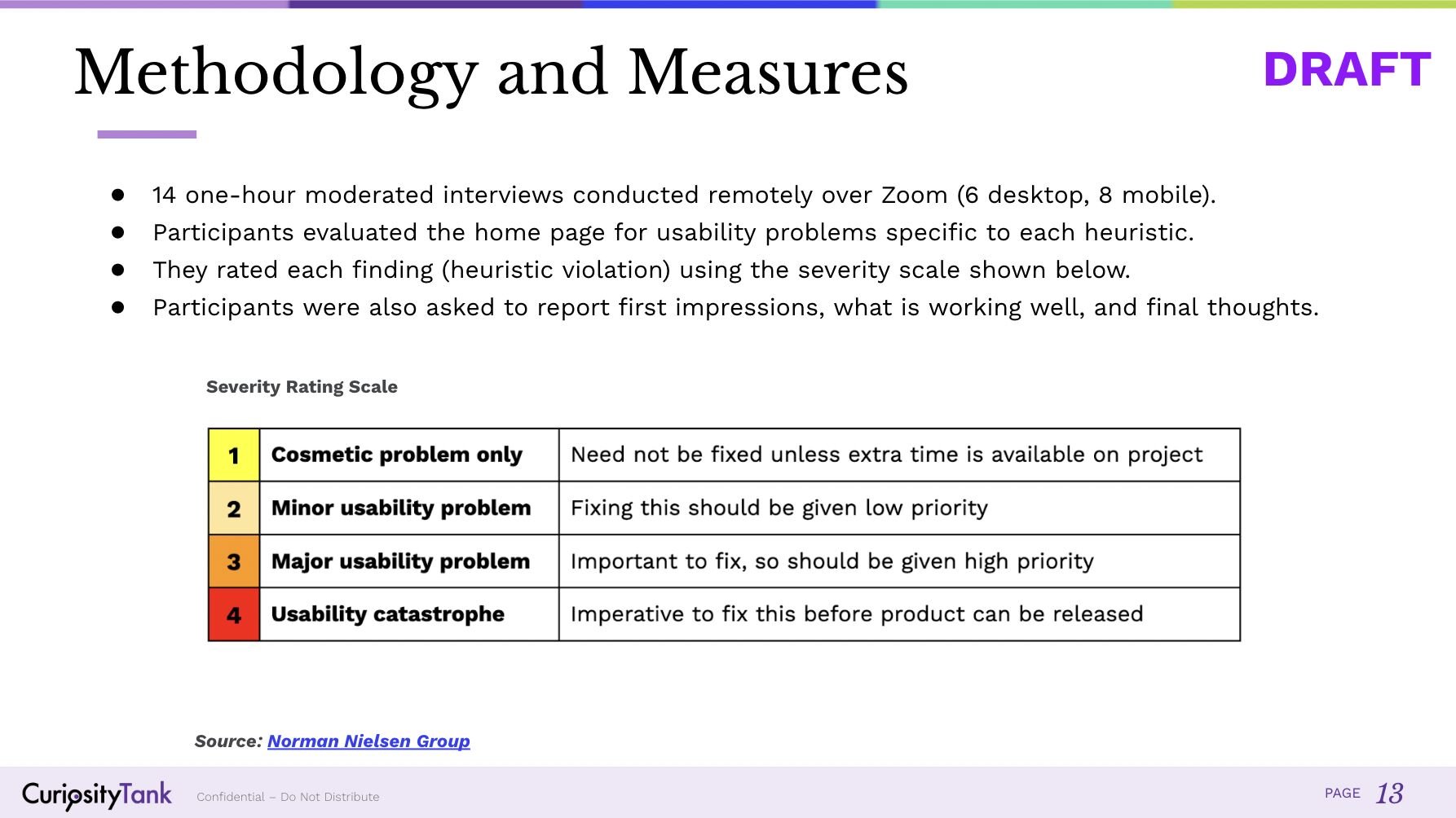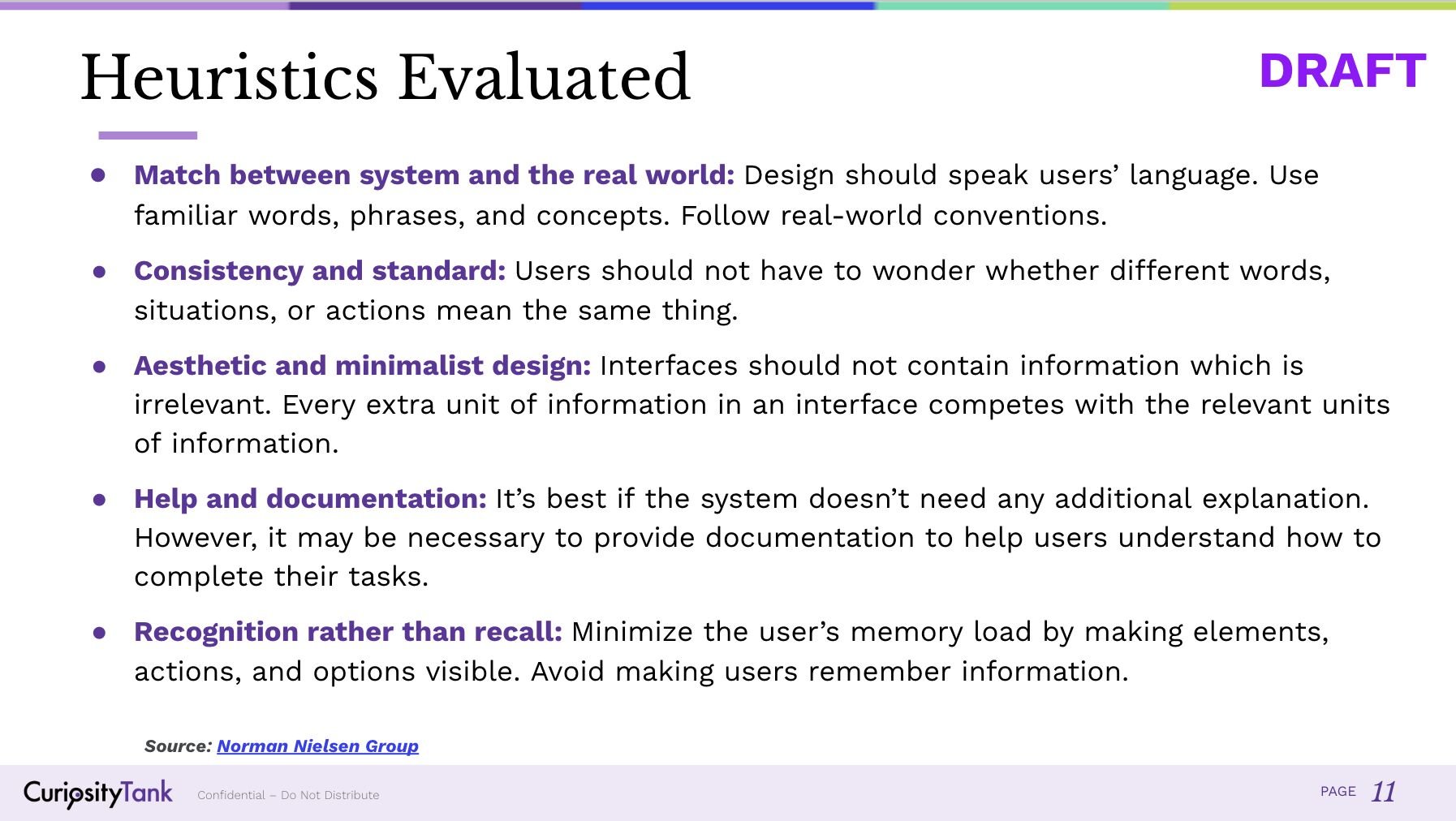What is a heuristic review and how do you conduct one?
What is a Heuristic Evaluation?
Heuristic evaluation is a process where experts use rules of thumb to measure the usability of user interfaces in independent walkthroughs and report issues.
Evaluators use established heuristics (e.g. Nielsen-Molich’s) and reveal insights that can help design teams enhance product usability from early in development.
What is a heuristic review? Why are they important? And how do you conduct one?
A heuristic review is a methodical evaluation primarily used to assess the usability and user-friendliness of digital interfaces. The images below are from a previous Curiosity Tank "Ask Like A Pro" cohort from two All-In researchers who conducted heuristic reviews. Both were conducted on an existing healthcare website. One for mobile and one for desktop.
Heuristic reviews examine a user interface based on predefined usability principles (aka "heuristics") to identify potential issues and design flaws. While they are a proactive way to identify and rectify issues early in the design process and can save time and resources in the long run, they can also be performed at any time, even after the experience has launched. (The mobile and desktop sites evaluated in the cohort had been live for a number of years.)
Why are heuristic reviews important?
Heuristic reviews provide valuable learnings about the usability of something, the emotions and connections people have with them, and help identify areas for improvement. They are intended to enhance satisfaction, increase efficiency, and boost the overall effectiveness of your solutions.
How do you conduct a heuristic review?
Familiarize yourself with established usability heuristics, such as Nielsen's 10 usability heuristics, and choose the heuristics best suited for what will be evaluated. NOTE: Not all of the heuristics will be meaningful to every project.
Examine the user interface systematically, assessing each selected heuristic against the design.
Take note of any violations, disconnects, and areas of improvement, providing specific feedback and suggestions for enhancement. Typically each violation is "scored". Concrete examples of how small changes can significantly enhance the overall experience are often provided.
Prioritize the identified issues based on their severity score, and potential impact on the user experience.
Share findings and recommendations with stakeholders, design and dev teams, and collaborate to implement the necessary improvements.
These reviews can also shed light on how an experience evokes emotions and establishes a connection with users, unveiling deeper-rooted issues in the design, such as cognitive biases, inconsistency, or lack of affordances, which can greatly impact user satisfaction.
If you haven't conducted a heuristic review before, or even lately, I encourage you to do so! While they might sound intimidating, they can really make a difference in ensuring your digital experiences are user-centric, intuitive, and effective.
Heuristic reviews play a crucial role in optimizing digital products and creating satisfying experiences for the people who use them.
Our next Ask Like A Pro cohort, our 12th (!), runs from September - November 2023. EXCITED!!!


